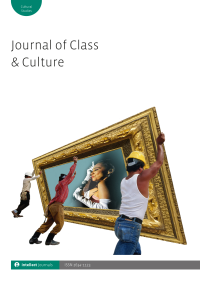
Full text loading...

This article examines the significant changes in the curation of artists’ film and video that occurred at Tate from the mid-1990s. The events taking place in this publicly funded museum, which holds the United Kingdom’s national collection of modern and contemporary art on behalf of the state, are weaved together with the development of the advocacy work in favour of artists’ film and video by US collectors Pamela and Richard Kramlich. The analysis aims to better define the role of private global economic capital in shaping curatorial approaches within state-funded national institutions and, in turn, within the distinction-making processes that lead to social reproduction. Attention is given to how artists’ film and videos, despite their often progressive content and ephemeral nature, in their passage from cinema/television to the gallery, have not escaped the distinction-making role fulfilled by other more traditional art forms, thus contributing to the persistence of class distinctions.

Article metrics loading...

Full text loading...
References


Publication Date:
https://doi.org/10.1386/jclc_00038_1 Published content will be available immediately after check-out or when it is released in case of a pre-order. Please make sure to be logged in to see all available purchase options.